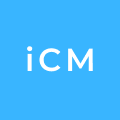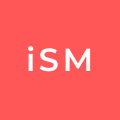Introduction to Dynamics 365
Cloud-based Enterprise Resource Planning (ERP) software continues to shine as more companies focus on moving away from archaic legacy solutions. Modern replacements can do more now than ever thought possible, including processing much more complicated tasks to fill current needs and requirements.
With ERP solutions becoming increasingly important to properly running a modern business, choosing the right one is a big deal. Once things like budget, time-frame, and availability are addressed – the final decision is often a compromise based on the needs of different departments like; Sales and Marketing, Operations, Customer Support, Financial Management, and more.
One of the best comprehensive solutions available is Microsoft’s Dynamics 365 line of products – designed as all-in-one enterprise resource planning solutions that help businesses stay competitive.
Microsoft Dynamics 365 is being used in more than 150 countries worldwide, with millions of customers, so it just might be worth understanding just how this popular solution benefits businesses.
Sales and marketing
While most departments stand to benefit from Microsoft Dynamics 365, sales and marketing departments will find many of its tools especially helpful. Microsoft Dynamics 365 Customer Engagement helps enterprises manage all kinds of professional activities – like marketing, sales, service delivery, and more – under one roof. For example, its native capabilities for data capture and customer relationship management help salespeople move more smoothly through every part of their day.
Regarding marketing campaigns, Dynamics 365 can automate much of a campaign’s launch so marketers can focus on other tasks that require more time and attention. It also enables cloud deployments by default which guarantees high levels of agility and flexibility without making existing investments obsolete.
Operations and customer support
Operations departments will benefit greatly from Microsoft Dynamics 365’s ability to integrate with CRM and other back-office applications. User management, reporting, and information sharing become much easier when all these different systems are operating on one platform.
Customer support teams can use online chat or emails to collect feedback from customers who contact them. Microsoft Dynamics 365 helps sales teams stay organized by setting up follow-up reminders, so they don’t forget about clients after an initial meeting.
Financial management and regulations
Microsoft Dynamics 365 provides financial departments with a single source of real-time data to manage accounts payable, accounts receivable, and more. Financial departments are often under immense pressure to deliver accurate numbers as fast as possible to management and stakeholders.
Microsoft Dynamics 365 will cut down on accounting errors by providing accurate data that is easy to access. This should make it easier for CFOs and auditors to find insights into improving business processes.
It’s also designed to meet compliance regulations such as Sarbanes-Oxley (SOX), Payment Card Industry Data Security Standard (PCI DSS), Federal Information Security Management Act (FISMA), Health Insurance Portability and Accountability Act (HIPAA), European Union General Data Protection Regulation (GDPR), etc. These regulations require companies across all industries to take steps to protect information held or transmitted on their systems against unauthorized access or disclosure.
This is an area where the functionality in Microsoft’s Dynamics 365 products is invaluable.
Business Intelligence
Monitoring critical KPIs along with real-time operational data can be the difference between succeeding and simply operating. Every company needs a way to track this information, allowing them to react to any scenario. The Microsoft Dynamics 365 Business Intelligence (BI) solution is designed to help analyze and monitor data from multiple sources and deliver information that can be used to make strategic decisions.
Business Intelligence departments choose Microsoft Dynamics 365 because of its ability to integrate with other Microsoft products. Another reason departments choose one software or another is the cost, and D365 has proven cost-effective and able to increase revenue through increased operational efficiency. Microsoft’s solution offers real-time insight into how a company is performing while providing a single source of information that can be accessed quickly and easily at any time. This enables a company to adapt its sales, marketing, and procurement strategies more quicker, giving them an edge over the competition.
Project Management
Microsoft Dynamics 365 offers project management departments their own robust tools to help manage and streamline their projects. These tools include time reporting, Gantt charts, and more advanced features like project prioritization and resource management. As soon as they launch Microsoft Dynamics 365’s streamlined Project Management module, users see how easier it is to organize tasks, track time on certain charges, and manage overall progress.
Also, with full integration into other modules within Enterprise Resource Planning (ERP), it becomes possible to seamlessly pull data from all parts of an organization into one central location, giving managers better insight into data across divisions without having to search for information or sift through emails manually.
In addition, Microsoft’s D365 Project Management can help alleviate an often overlooked problem in small businesses: meeting basic compliance requirements.
Let’s discuss the best offerings from Microsoft Dynamics 365 ERP for your business needs today-
Final Thoughts on Dynamics 365
Regardless of the industry, implementing an ERP today is a big step. Pick the wrong ERP or fumble the implementation and risk significantly disrupting your operations. Microsoft’s devotion and investments into their Dynamics 365 products have topped millions in order to create systems that balance both functionality and affordability.
Because Microsoft Dynamics 365 is so affordable and user-friendly, it’s no wonder that businesses from all sectors choose Dynamics 365 as their system of record. Dynamics 365 has been adopted by over 1 million users worldwide since it was launched in 2016. To this point, Microsoft’s Dynamics 365 system is primed to continue as a leader going forward. It’s easy to get started with Microsoft Dynamics 365 today:
















